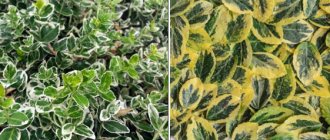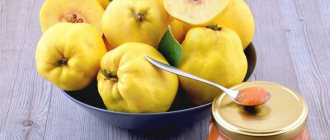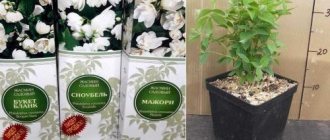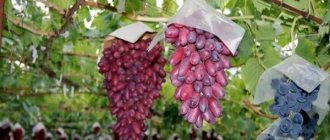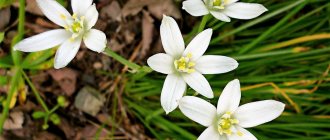Description
Under natural conditions, protea forms a shrub reaching 2 m. When grown indoors, the height of the plant does not exceed 60-70 cm. The bush with long and strong, reddish shoots is covered with dense, leathery leaves. They have an oval-elongated, sometimes linear shape and a dark green color.
Protea blooms with large heads of unusual shape, reaching up to 20-30 cm in diameter when blooming. Needle-shaped petals frame a cone-shaped bowl. The structure and color of bracts and sepals is strikingly diverse.
Appearance
Flowering begins in late spring, when beautiful, large inflorescences bloom on tall peduncles and lasts several weeks. The color of the flowers varies from pink to red in all shades.
There are beige and silver tones. One bush covers several dozen inflorescences, which can be compared to burdock, cones or artichokes.
Protea. A desert flower and a sea deity - what do they have in common?
Protea is one of the most beautiful plants in Africa. Carl Linnaeus named it in honor of the Greek sea deity Proteus. The shapes and colors of the flowers of these plants living in the spartan conditions of South Africa and Australia are surprisingly diverse. Interestingly, even one specimen may have leaves of different shapes.
Proteus, the son of Poseidon, had the ability to take on the forms of various animals and birds, and could appear in the form of fire and water. Before honest people he appeared in the form of water, and he pursued evil people in the form of formidable beasts. It is these qualities that appear in different forms that led to the fact that the desert plant was named after the sea deity.
True, this is where all the similarities between Protea and the son of the god of the seas end. South Africa is considered the homeland of the Protea family. The Cape Province of southern Africa is home to more than 400 species belonging to 14 genera. In total, the family has about 70 genera, which include more than 1,400 species.
In southern Africa, protea is one of the most popular and beloved plants. One of its species, the royal protea, is considered the symbol of South Africa.
Among the proteas there are trees up to 20 meters high, but the majority are shrubs and perennial herbs. Proteas like to live in large groups, this way they provide themselves with protection from strong winds and also save the soil from overheating, which helps retain moisture.
South Africa is a veritable paradise for Proteaceae. Here they bloom all year round: some in summer, others in autumn, spring, and winter. Many species of this family have adapted to pollination by vertebrates: bats, birds, small climbing mammals.
Most Proteaceae have leathery leaves that are needle-shaped or linear in shape. The underground organs contain reservoirs of moisture. The main advantage of this family is the gorgeous bright flowers, the diameter of which ranges from 5 to 30 cm. Depending on the variety, they are filled with sweet nectar.
What gives proteas an unusual, original appearance is not the flowers themselves, but their leaf wrappers, painted in yellow, pink, blue-pink colors. Thanks to these leaves, the flowers look like sea urchins, starfish, and decorative cups.
Proteas are heat-loving plants, so they cannot be grown in open ground in our latitudes. These noble plants were appreciated by Europeans and, already in the 19th century, they began to be grown in winter gardens at the courts of kings and nobility. It is known that the London merchant Georg Hibber had about 150 species of proteas in his collection. Later, one of the genera of New Zealand proteas was named after him.
One of the most beautiful proteas is considered to be Protea artichoke.
.
The diameter of its capitate flowers reaches 30 cm, they are surrounded by bright leaf wrappers. Locals call this species a “pot of honey.” This Protea received this name for the large amount of sweet nectar. Royal (king) proteas
also contain large amounts of sugar. Local residents satisfy their need for sugar using them.
Nowadays, proteas are grown in greenhouses and greenhouses in many countries around the world. These original flowers are good for cutting - they remain attractive for 2-3 weeks. White proteas are used in wedding bouquets. It is believed that protea is a masculine flower and is recommended to be given to self-confident people. These flowers also look great in dry bouquets.
Exotic lovers successfully grow proteas in apartments. protea superb as a house plant
. It has heart-shaped grey-green leaves; the flowers are large and pink or red-pink in color.
How to raise an African beauty in an apartment? First of all, you can take on this only by creating the necessary conditions for its comfortable existence. The main thing is to provide an abundance of sun and light. On cloudy days, highlight. In winter, keep at a temperature of 5-6, in summer - 20-25 degrees.
Protea is propagated by seeds, germination persists for several years. At home, protea blooms for 5-6 years. You can purchase seeds through online stores. Before sowing, it is advisable to stratify the seeds in damp sand in the refrigerator for several weeks. Then soak for a day in warm water. Experts recommend sowing them in February-May.
Take ready-made soil intended for azaleas - it is slightly acidic, which is what is required for proteas. Add sand and perlite to it. Place expanded clay at the bottom of a wide, shallow pot, add soil, plant the seeds at a depth of 2-3 times greater than the size of the seed. Pour warm boiled water over it and cover with glass or plastic wrap and ventilate regularly.
Seeds germinate at a temperature of 20−25 degrees for 4−6 weeks. When two leaves appear, the cover can be removed and the pot placed in a bright place. And now the main thing is not to flood it. Overwatering may cause seedlings to die. Seedlings grow slowly. For irrigation, you should use settled water. When the soil becomes alkalized, proteas turn yellow and die.
They practically do not need fertilizers. In the summer, you can water it once a month with water acidified with azalea fertilizer. In winter, water once a month.
Young plants should be replanted every spring, adults - as needed. After flowering, the flowers should be removed and the stems trimmed slightly.
Proteas are resistant to diseases and pests, but sometimes they can get late blight, blackleg, and are occasionally attacked by aphids.
Tags: growing, Africa, exotic, floriculture, indoor plants, flowers
The Many Faces of Protea
There are over 400 species of representatives of the family. Some resemble marvelous fruits, others resemble stars, and others resemble sea urchins. All of them are brightly colored and striking in their appearance. Cone-shaped inflorescences differ significantly in shape and structure among different species, as well as between representatives of the same species.
Common flower varieties:
- artichoke (Protea cynaroides), which is most widespread due to its large flower up to 30 cm in diameter with bright pink petals. The luxurious flower is often used to decorate holidays.
Protea cynaroides
- large-headed protea (Protea macrocephala) - a flower as in the photo, with a felt core framed by red, pointed petals. The outer part of the inflorescence consists of smaller scaly petals with a smoky color.
Protea macrocephala
- Blackbeard (Protea lepidocarpodendron) with creamy sand flowers. The edge of the inflorescence has a purple, dark purple, or brown edge.
Protea lepidocarpodendron
- creeping (Protea repens) has recumbent shoots, small foliage and small ball-spines of inflorescences.
Protea repens
Conditions of detention
Growing protea requires a lot of effort. A heat-loving flower in a temperate climate grows only in a room and a greenhouse. He will need a place with bright lighting and direct sunlight on the bush for several hours. During the winter months, additional lighting is necessary.
Comfortable conditions for Protea are consistently hot conditions with temperatures ranging from +20°C. In winter, the flower is kept at a cool temperature of 5-10°C. If there is no cool winter, there will be no flowers next year.
Needs bright lighting
The plant needs an influx of fresh air and good ventilation. You can only place the flower on a glazed balcony.
To add decorativeness, the stems of the bush are shortened by 1/4 of their height in the spring. After flowering, the stems are cut to 10 cm.
Bloom
The main value of the culture is bright, chic flowers. Their diameter can range from five to thirty centimeters. There are varieties with a sickly sweet aroma. Protea is grown in greenhouses and conservatories around the world.
Amazing flowers are used to create original bouquets, including wedding ones. They are able to maintain their freshness for up to twenty days.
Protea can also often be found dried in various compositions. After wilting, you need to trim the stem a few centimeters below the inflorescence. All parts of the flower are non-toxic. But for allergy sufferers, it is better not to keep the plant in the bedroom during the flowering period.
To stimulate flowering, you can supplement the protea with artificial lamps.
Watering and fertilizing mode
Between scanty waterings in spring and summer, the soil should have time to dry out, because under natural conditions, protea grows in dry soil. In winter, the breaks are increased and watered once every 3-4 weeks.
Excessive moisture will lead to the death of the plant. Add 2-3 drops of lemon juice or citric acid crystals on the tip of a knife to soft water for irrigation. Protea loves hot air, and humidity can ruin the attractiveness of the inflorescences.
Fertilizing is carried out in order to maintain soil acidity from April to September once a month with fertilizer for azaleas and rhododendrons, mixing half the dosage into the water for irrigation. Proteas are accustomed to poor soils and excess nutrients can destroy them.
Transfer
Young proteas need to be replanted every 2-3 years. At the same time, the size of the container is increased. Choose shallow and wide containers. The top layer is removed from the earthen clod, and the soil around the roots is left untouched. Mature, flowering plants are transplanted only after the pot is filled with roots.
The substrate is prepared loosely, with the addition of expanded clay and soil for acidophilic plants. You can mix equal parts of pine needles, peat, sand with soil for azaleas. An acidic soil pH of 5.0 to 5.5 is recommended.
Protea in a pot
Reproduction methods.
Protea reproduces by seeds. And in order for the performance to be good, it is better to do stratification. To do this, the flowers are placed in damp sand and kept for several weeks in the refrigerator on the bottom shelf. The day before sowing, they are dipped in a container of warm water. The soil for planting is the same as for azaleas. You can also add perlite and sand. Protea will love this. Pots should not be very deep, but wide. Expanded clay is placed at the bottom and then covered with soil. Seeds are planted at a depth that is 2 times their size. After which the planting material is moistened with boiled water. The top of the pot is covered with glass or plastic film, which must be removed to provide ventilation to the soil.
Protea in floristry
Florists fell in love with protea for its exotic decorativeness. A bush with glossy leaves is beautiful even without flowers. In a bouquet, protea remains fresh for 2-3 weeks. After drying, it does not lose its color brightness or shape. Dried flowers are used to decorate flower arrangements.
Protea is popular in wedding decor for decorating the hall, arch, and in the bride's bouquet. The flower looks elegant and solemn; it only needs to be supplemented with greenery.
In combination with other flowers, protea will be a leader. It is combined with lush peonies, hydrangea, and majestic roses.
Watch also the video on the topic:
